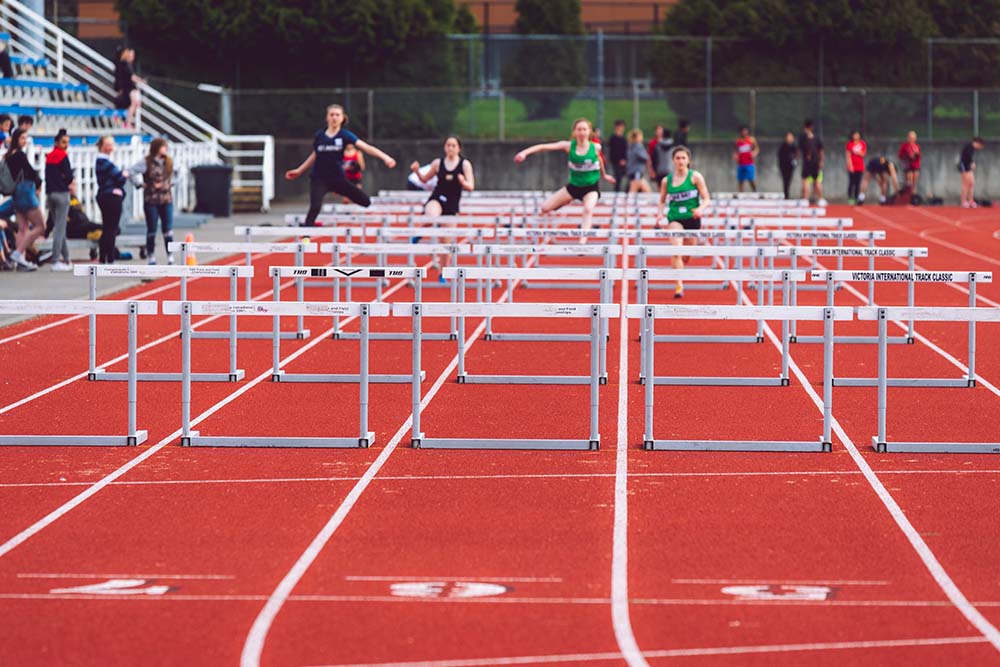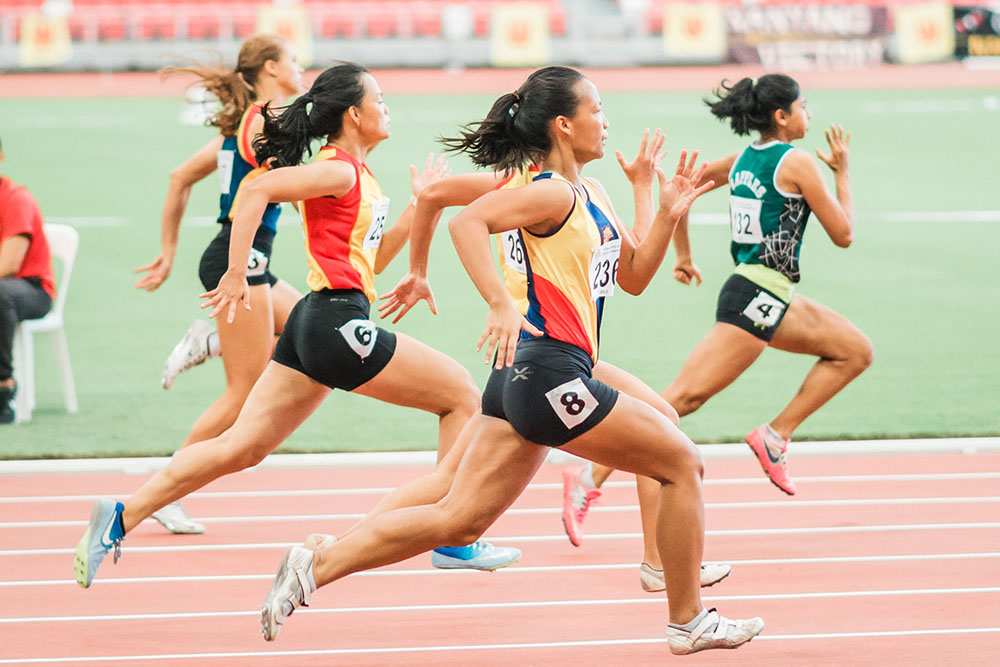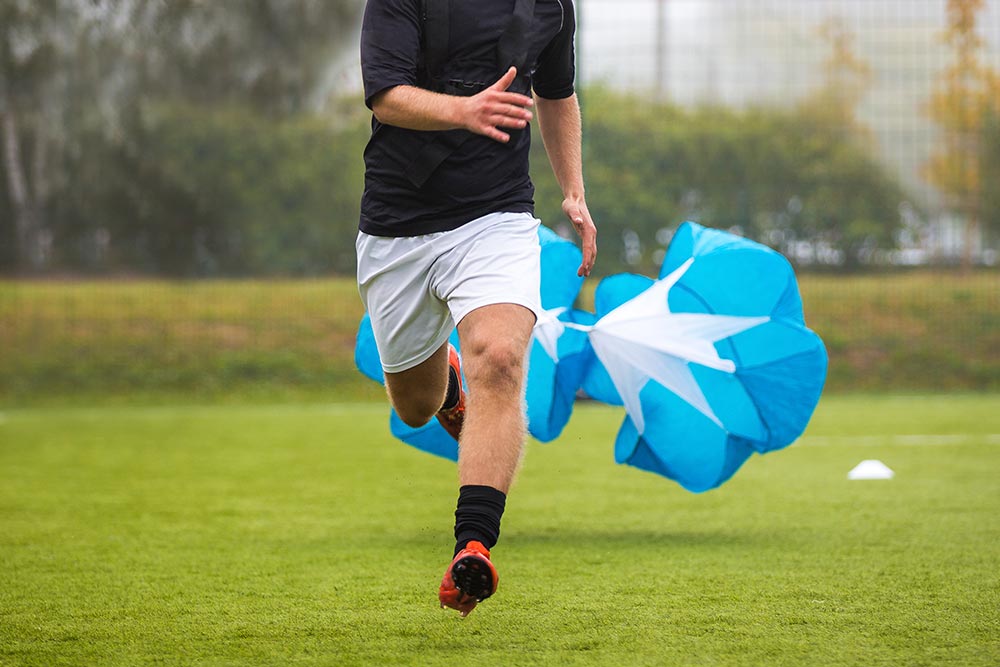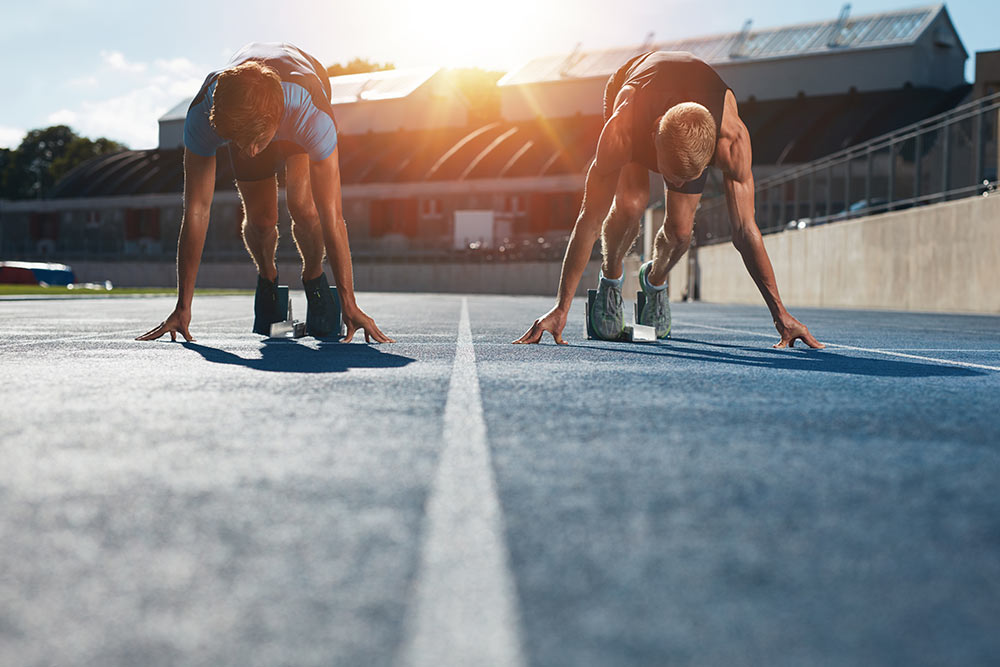Standing Start & Initial Acceleration Can Determine Sprint Speed

A Review by Alyssa Bialowas
The ability to accelerate in short sprint distances benefits the performance of athletes in team sports such as hockey, football, rugby, soccer, and in all athletics and sprint distance running. Sprinting requires an individual to cover a set distance at maximum peak strength and cardiovascular output. The ability to accelerate and transition to maximum velocity phases of the sprint provides an opportunity for successful performance in respective team sports.
Literature surrounding key kinematic variables associated with short sprint performance is limited when looking at the first three strides of a sprint. This study set out to investigate the determinants of sprint performance and develop reliable testing techniques for athletes that participate in team sports.
Related Article: Push or Pull? Sprinting Mechanics and You
The Study
Ten male volunteers from various team sports agreed to participate in the study. The team of researchers used a test-retest design to determine reliability between sessions of short sprint performance and the kinematic variables, where each score was measured in respect to each subject over two sessions. The subjects participated in the two sessions, at a minimum of 48 hours apart. Participants performed three maximal output sprints over a 10m distance from a standing start, where 5m and 10m sprint times were captured with high-speed camera footage. Key kinematic variables were measured in this way.
The Results
Key kinematic variables associated with sprint performance produced reliable results between trials. Sprint performances were identified as unreliable variables of measurement in the study, as performances were too inconsistent between trials. Step frequency and flight time during the third step had the largest correlation with overall sprint performance. Third step length and stance time produced a small correlation as well. However, the majority of associations were insignificant. The results of the study are still valuable in substance as noting inconsistencies in sprint performance can offer various training interventions in team sport athletes.
Takeaway
Determinants of sprint performance vary between athletes that participate on team sports versus track and sprint distance running. Due to the nature of variable athletes and varying sprint techniques, team sport athletes may be more inconsistent in their running as compared to sprinters. Future research is required to investigate whether additional kinematic variables such as such as step length and frequency, stance time and flight time, influence sprint performance in team sport athletes.
Related Article: So You Want To Be A Sprinter? – Ebook Edition
You Might Like:
The Biomechanics of Breathing During Sprinting
Sprinting is one of the most physically demanding tasks that the human body can perform. It requires an incredible amount of explosive power, tissue resilience, and motor coordination, in conjunction with a vast body of...The Biomechanics of the Sprint Start
A perfect sprint performance is dictated by several factors, including muscle strength, explosive muscle power, a high degree of neural coordination, and most importantly – optimal sprinting technique. However, while most sprinters tend to take...How Do Sports Injury Rates Change As You Age?
As you get older, exercise becomes the most beneficial thing you can do for your body. It staves off disease and illness, all whilst helping you maintain (and often improve) joint, bone, and muscle health....Does Sprint Performance Decline With Age?
Exercising regularly across your lifespan is the perfect way to maintain health and function well into your golden years – and one of the best modes of exercise on the planet is unquestionably sprinting. Sprinting...Resisted Sprinting For Speed & Acceleration Development
Hunter Bennett Over the last decade, we have seen the world of athlete development come along in leaps and bounds (both literally and figuratively). We have seen the widespread uptake of strength training, plyometrics, and...Start Positions for Sprinters
Hunter Bennett Sprinting is one of the most incredible acts of human performance on the planet. While at first glance it may seem like quite a simple task (just run as fast as you can,...References
Maulder, P., & Standing, R. (2017). “The Biomechanics of Standing Start and Initial
Acceleration: Reliability of the Key Determining Kinematics.” Journal of Sports
Science and Medicine, 16, 154-162.










